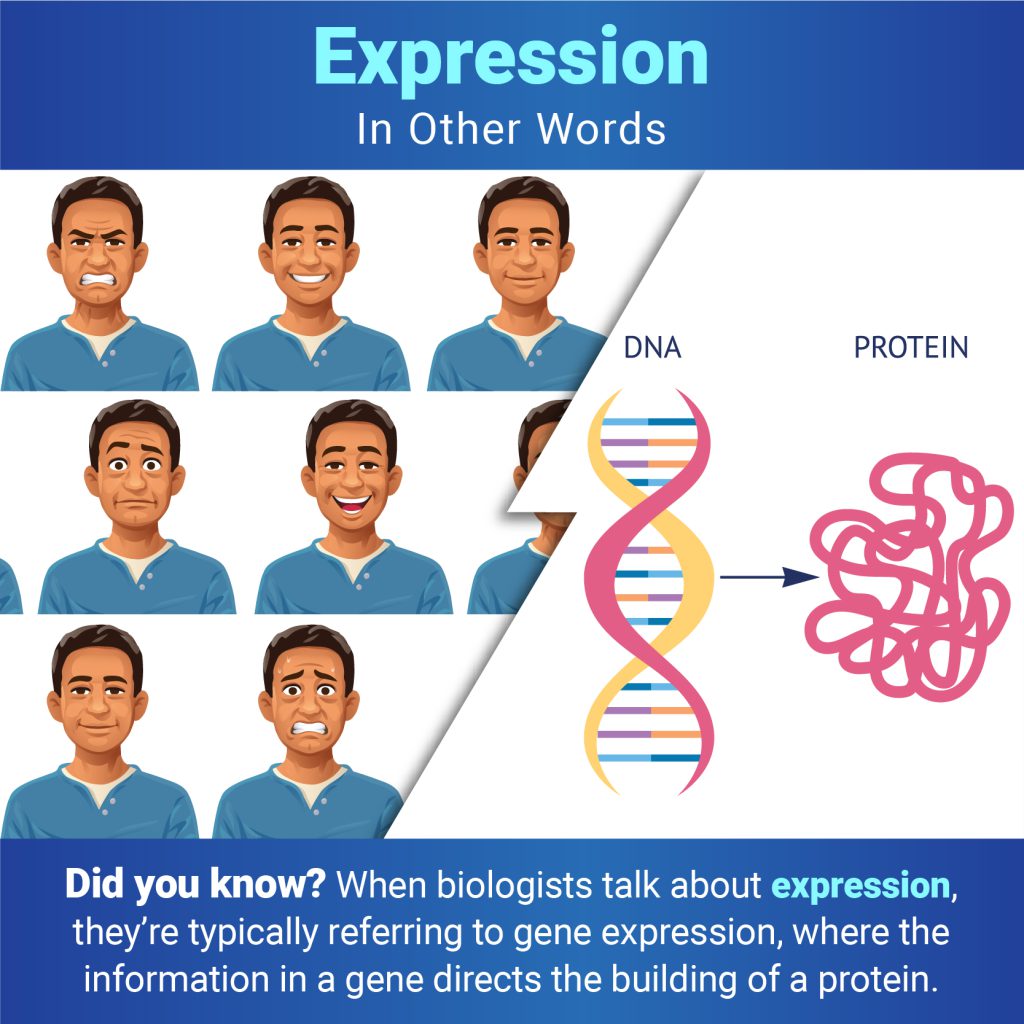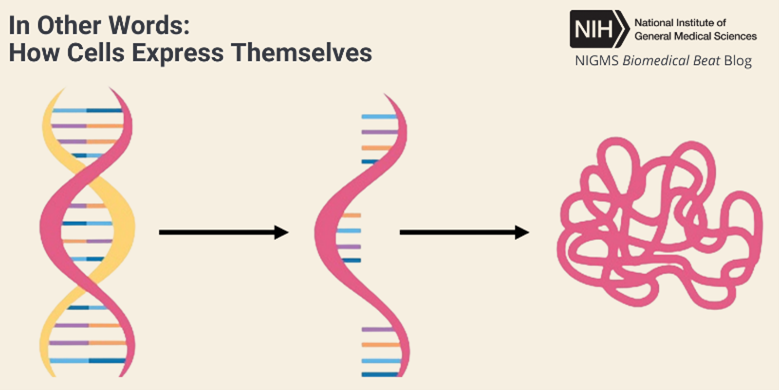When you encounter the word expression, you may think of a smile, a grimace, or another look on someone’s face. But when biologists talk about expression, they typically mean the process of gene expression—when the information in a gene directs protein synthesis. Proteins are essential for virtually every process in the human body.

How to Build a Protein
Gene expression has two main steps: transcription and translation. In transcription, RNA polymerase copies the information from a gene in DNA to create messenger RNA (mRNA) from building blocks called nucleotides.
In translation, the mRNA created during transcription passes through a cellular “machine” called a ribosome. The ribosome reads the sequence of nucleotides to build a protein out of amino acids.
Regulating Gene Expression
A human cell expresses only a fraction of its genes at any given time. One reason is that almost every cell in a person’s body contains their entire genome, which has instructions for building the full catalog of proteins their body needs. And since each type of cell needs only some of these proteins, they don’t waste energy creating proteins that aren’t useful to their specific function. For instance, only red blood cells produce hemoglobin, a protein that transports oxygen from the lungs to the rest of the body.
Cells have several proteins that are responsible for regulating gene expression. Mutations or underexpression of these proteins can lead to several rare diseases, including CHOPS syndrome, Coffin-Siris syndrome, and Rubinstein-Taybi syndrome.
Cells change their gene expression based on circumstances too. For example, a cell may turn the expression of a certain gene on at night and off during the day. Cells can also decrease or increase the amount of a protein being made based on their current needs and functions. In this way, gene expression and facial expression aren’t so different: They both constantly shift. While changes in facial expression may be important social signals, shifts in gene expression are crucial for life and health.


